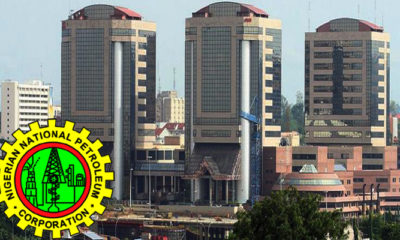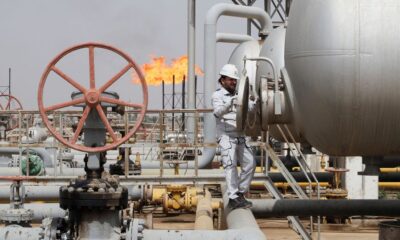By Jeffrey Halley, Senior Market Analyst, Asia Pacific, OANDA
Seemingly, the sharp rise in US yields this week has sparked a move from growth to value, or as I put it, from the Nasdaq to the Dow Jones. Whether it lasts is another thing altogether, with such rotations running out of steam over the past 18 months, without really ever gathering momentum. Still, a couple of things are “different this time,” namely the omicron variant is rapidly being repriced as omi-gone. Secondly, the Federal Reserve has commenced tapering its QE and will likely start hiking soon after the mid-year.
US yields should keep rising, not a certainty and the world has been led to water many a time over the past 18 months on this front. The reason? You can buy a 10-year Japan JGB and earn 0.0%, or a 10-year Bund and earn maybe -0.40% but buy a US 10-year note and you’ll earn 1.60% right now. What’s not to like if you are a pension fund manager in Europe or Japan with ageing populations who will all require a pension? Slap in $120 billion a month of buying from the Fed alongside them, it’s hardly a surprise that being a US bond vigilante has become a tough job.
The overnight data from the US didn’t really support the premise either. The Jolts Job Openings dropped by around 0.50 million to 10.562 mio, while quits jumped to 4.50 mio. The ISM Manufacturing PMI fell to 58.7, while the Manufacturing Employment, New Orders and Manufacturing Prices sub-indexes all eased. None of that data was inflationary, more people were working, even as labour market turnover increased, but mostly in jobs, people hate, restaurants/food service, delivery and warehouses. PMIs, prices and orders eased but that can be accounted for by holiday seasonality and Omicron’s incredible spread, forcing many workers to self-isolate.
The overnight US data is likely to be an outlier, but don’t count out the growth versus value trade just yet, and a US Non-Farm Payrolls number on Friday under 400,000 jobs added could give the Fed Funds hike-a-nistas pause for thought. I do believe that higher US rates, a higher US Dollar, and tighter monetary policy will be the bride to make an honest man of big tech, but full confirmation will only come later in Q1. And even then, I am expecting technology to experience more two-way price action, not beat a full retreat, although if you are a pimped up SPAC, this year may not be your year. Inverting SPAC and inserting an R after the C would sum it up best in my mind. Always beware of investment bankers bearing gifts, I’ve been saying his for 20 years, and still, no one listens.
A similar pattern is emerging in Asia today as well, with the North-East Asian heavyweights of China, Japan and South Korea struggling for friends today, while the more value-stock-heavy markets of South-East Asia are generally doing better. Keep a cautious and risk-averse eye on China over the next couple of days. Shares of Huarong Asset Management, a poster child of China corporate governance, returned to the market today after a 9-month suspension. Wearing a fresh $6.6 bio government bailout, they promptly fell by 50% in Hong Kong. Another champion of corporate governance, Evergrande, faces potential redemptions of a CNY 4.50 bio bond from investors this weekend.
The China property sector remains a slow-moving lava flow, burning everything, it touches. That pain now switches to domestic investors and unsurprisingly, Evergrande is meeting investors from the 7th-10th to try and extend the put option. As I’ve said before, beware investment bankers bearing gifts, or in this case telling you to buy the dip; and remember, there’s never just one cockroach.
Asia follows New York’s value versus growth.
Overnight, Wall Street went looking for the winners in an inflationary environment and as a result, loaded up on the Dow Jones at the expense of the Nasdaq, mostly on the premise the Fed inflation hunting will resume as the global recovery bids omicron goodbye. The S&P 500 was almost unchanged at -0.06%, but the Nasdaq tumbled by 1.33%, while the Dow Jones added 0.58%. In Asia, all three indexes have retreated, down around 0.25%. A fire at the worlds most critical semiconductor machine manufacturer, Dutch company ASML, could be weighing on sentiment.
Extreme ultra-violet lithography systems aside, Asian markets have split in roughly the same direction as New York today. The Nikkei 225 is unchanged, having reversed earlier losses, but the South Korean Kospi is 1.30% lower and Taipei is down by 0.35%. The ASML fire potentially weighs more on the latter two.
China markets are also in retreat on pre-Chinese-New-Year funding fears, China property developers, US-listed technology groups and Huarong with no signs from the PBOC that it intends to ease the funding crunch as it keeps money tight via the daily repo. The Shanghai Composite is down 0.85% with the CSI 300 easing 0.65% lower. Hong Kong is down 0.75% today.
In ASEAN though, Singapore has eased 0.25%, but Kuala Lumpur is 0.20% higher and Bangkok is up 0.30%, with Jakarta and Manila unchanged. Most exchanges having given back intra-day gains. Australian markets are lower after jumping the gun on the value trade earlier this week with some stellar gains so far. The easing of the S&P 500 and Nasdaq overnight and today has prompted some profit-taking down under. The ASX 200 and All Ordinaries are 0.35% lower.
Europe is likely to find gains hard to find initially with Asia’s mixed momentum subsiding and turning to a more generally cautious note. If the fire damage at ASML’s Berlin factory is minimal, that could be enough to encourage the bulls back again as none likes the thought of a drawn-out semiconductor shortage.
A mixed US Dollar performance.
The US Dollar had a mixed night, rising versus the major currencies and the Asian currency grouping, as firm US bond yields sparked yield differential nerves. Conversely, the same post-omicron sentiment propelling stock markets and bond yields higher had a positive effect on the usual sentiment barometers. Sterling, and the Canadian, Australian and New Zealand Dollars all having a good night.
The dollar index rose 0.06% overnight, only to give it all back in Asia, where it is trading net-unchanged for the last 24 hours at 96.24. A break of 95.50 or 96.50 will signal the index’s next directional move, although if US yields stay firm, the greenback looks set to continue to outperform in the major currency space. EUR/USD remained steady at 1.1295, as did USD/JPY at 116.00, while positive comments from the UK Prime Minister that Britain could weather the omicron storm without shutting down lifted GBP/USD to 1.3530, where it remains in Asia. A close above 1.3560 potentially signals a rally to 1.3800.
Although the AUD, NZD and CAD retraced some of their losses overnight, they are almost unchanged at 0.7235, 0.6805 and 1.2715, leaving all three roughly mid-range for the week. 0.7180 and 0.7280, 0.6750 and 0.6850, and 1.2600 and 1.2800 are the breakout levels to watch for. Sentiment swings continue to rule the direction of the three amigos.
In Asia, the rise in US yields seems to be spooking some Asian currencies, with the US Dollar rally pushing a number of pairs towards line-in-the-sand levels with their respective central banks. USD/KRW is at 1198.00 approaching 1200.00. USD/PHP has risen up through 51.00 to 51.10, USD/IDR is at 14,350 approaching 14.500.00 and USD/MYR looks set to test 4.2000. The Yuan, Baht and Indian Rupee continue to outperform. For the rest, it will be interesting to see if their respective central banks step out of the shadows and start offering US Dollars again. In a rising US interest rate environment, this will be a quandary they will be asked numerous times in 2022. If the Asian central banks stay side-lined, USD/Asia could be about to move sharply higher, assuming US yields hold their gains.
OPEC+ can’t dent oil.
Oil prices rallied overnight, despite OPEC+ announcing its pre-planned 400,000 bpd increase in monthly production. The omicron is omi-gone trade continued to hold sway, with its brighter outlook for world growth and oil consumption lifting oil prices, aided by larger than expected drawdown from private US API Crude Inventories.
Brent crude rose by 1.60% to $80.15 overnight, with WTI climbing by 1.60% as well to $77.20 a barrel. Some spec-drive long-covering has seen Brent ease back to $79.85, and WTI ease back to $76.80 a barrel. In the bigger picture the fall today looks corrective and if sentiment holds up and official US Crude Inventories fall tonight, oil should resume its upward march.
Brent crude has support at $78.60 and $77.75 barrel, its 100-day moving average (DMA). It has resistance here at $80.00, and then $82.00 a barrel. WTI has support at $75.75 and then $74.75, it’s 100-DMA. It has stout resistance at $77.50 barrel, and then $79.30.
Gold’s shows some fighting spirit.
With US yields and the US Dollar holding their gains but trading sideways, gold some fighting spirit, or perhaps blind optimism, to carve out a decent gain overnight. Gold rose by 0.75% to $1815.00 an ounce, where it remains in Asia. As ever, gold tends to run for cover at the first sign of trouble, so I would not say that gold has “weathered the storm” for one instant.
Gold has resistance at $1830.00 and $1840.00 an ounce, although it would be a huge surprise if we saw those levels this week. Support lies at $1798.00, which held once again overnight, followed by $1790.00 and $1780.00 an ounce. $1790.00 to $1820.00 is my call for the range this week.


 Forex2 weeks ago
Forex2 weeks ago


 Naira2 weeks ago
Naira2 weeks ago
 Naira4 weeks ago
Naira4 weeks ago
 Company News4 weeks ago
Company News4 weeks ago
 Billionaire Watch1 week ago
Billionaire Watch1 week ago




 Naira2 weeks ago
Naira2 weeks ago




 Naira4 weeks ago
Naira4 weeks ago




 Naira1 week ago
Naira1 week ago















